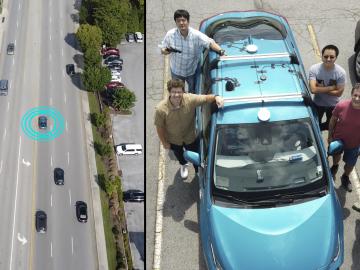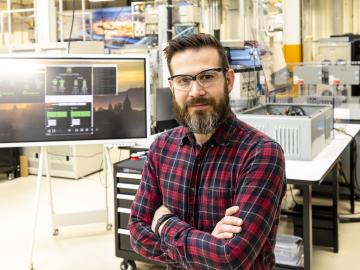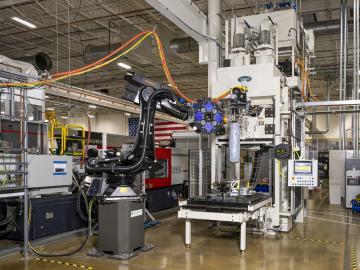
Filter News
Area of Research
- Advanced Manufacturing (3)
- Biological Systems (1)
- Biology and Environment (27)
- Building Technologies (1)
- Computer Science (2)
- Energy Frontier Research Centers (1)
- Energy Science (43)
- Fusion and Fission (7)
- Fusion Energy (3)
- Isotopes (2)
- Materials (71)
- Materials Characterization (2)
- Materials Under Extremes (1)
- National Security (11)
- Neutron Science (18)
- Nuclear Science and Technology (2)
- Supercomputing (35)
News Topics
- (-) 3-D Printing/Advanced Manufacturing (27)
- (-) Artificial Intelligence (28)
- (-) Bioenergy (27)
- (-) Composites (10)
- (-) Computer Science (45)
- (-) Fusion (14)
- (-) Materials (59)
- (-) Nanotechnology (16)
- (-) Physics (25)
- (-) Transportation (27)
- Advanced Reactors (4)
- Big Data (13)
- Biology (32)
- Biomedical (12)
- Biotechnology (6)
- Buildings (14)
- Chemical Sciences (24)
- Clean Water (6)
- Coronavirus (4)
- Critical Materials (10)
- Cybersecurity (14)
- Education (3)
- Emergency (1)
- Energy Storage (24)
- Environment (53)
- Exascale Computing (17)
- Fossil Energy (2)
- Frontier (19)
- Grid (19)
- High-Performance Computing (33)
- Hydropower (3)
- Irradiation (2)
- Isotopes (17)
- Machine Learning (15)
- Materials Science (28)
- Mathematics (2)
- Mercury (6)
- Microelectronics (2)
- Microscopy (13)
- Molten Salt (5)
- National Security (21)
- Neutron Science (45)
- Nuclear Energy (31)
- Partnerships (24)
- Polymers (9)
- Quantum Computing (12)
- Quantum Science (12)
- Security (10)
- Simulation (29)
- Software (1)
- Space Exploration (6)
- Summit (11)
Media Contacts

ORNL researchers determined that a connected and automated vehicle, or CAV, traveling on a multilane highway with integrated traffic light timing control can maximize energy efficiency and achieve up to 27% savings.

Oak Ridge National Laboratory scientists identified a gene “hotspot” in the poplar tree that triggers dramatically increased root growth. The discovery supports development of better bioenergy crops and other plants that can thrive in difficult conditions while storing more carbon belowground.

In fiscal year 2023 — Oct. 1–Sept. 30, 2023 — Oak Ridge National Laboratory was awarded more than $8 million in technology maturation funding through the Department of Energy’s Technology Commercialization Fund, or TCF.

Currently, the biggest hurdle for electric vehicles, or EVs, is the development of advanced battery technology to extend driving range, safety and reliability.

As vehicles gain technological capabilities, car manufacturers are using an increasing number of computers and sensors to improve situational awareness and enhance the driving experience.

Little of the mixed consumer plastics thrown away or placed in recycle bins actually ends up being recycled. Nearly 90% is buried in landfills or incinerated at commercial facilities that generate greenhouse gases and airborne toxins. Neither outcome is ideal for the environment.

Steven Campbell can often be found deep among tall cases of power electronics, hunkered in his oversized blue lab coat, with 1500 volts of electricity flowing above his head. When interrupted in his laboratory at ORNL, Campbell will usually smile and duck his head.

Using neutrons to see the additive manufacturing process at the atomic level, scientists have shown that they can measure strain in a material as it evolves and track how atoms move in response to stress.

An Oak Ridge National Laboratory-developed advanced manufacturing technology, AMCM, was recently licensed by Orbital Composites and enables the rapid production of composite-based components, which could accelerate the decarbonization of vehicles

ORNL will lead three new DOE-funded projects designed to bring fusion energy to the grid on a rapid timescale.


